How to get rid of brown leaf spots
Nobody wants brown spots on their beautiful houseplants. A few brown marks are nothing to worry about, but there are ways to minimise them.

Brown spots are one of your plants’ ways of letting you know something’s up. The cause is rarely anything too serious, but it’s good to try to fix the problem.
Whatever the cause, brown spots won’t turn back to green so you may want to trim off affected leaves, to make your plant look nicer.
Now let’s help you diagnose the problem.
Dry spots on leaf edges
Underwatering, overwatering and lack of humidity can cause dry brown spots, especially along the edges of leaves or on leaf tips.
Solution: Stick a finger in the soil. If it feels bone dry, you’re probably underwatering. If it feels soggy, you’re likely overwatering. If it feels just lightly moist, dry air is probably the issue, so take steps to increase the humidity. Make the air more humid by introducing a humidifier, by topdressing the surface of your plant's compost with a layer of LECA balls (lightweight expanded clay aggregate), or misting your plants several times a week. Even better, pop your plants in the kitchen or bathroom where it’s naturally steamy.
Burn-like spots
If your plant looks scorched - dark brown, dry marks; frazzled tips - that’s probably exactly what’s happened. These are likely signs your plant is getting more direct sun than it can handle. It can also be the result of misting your plant when the sun is shining on it - the water droplets having a magnifying effect that burns holes through the leaves.
Solution: Move it to a spot that’s still light but out of direct sun. Remember the sun is much stronger in summer than winter, so a spot that’s perfect in cold months may be too sunny when the weather turns hot. Secondly, if you’re going to mist, do it early in the morning before the light hits the leaves.
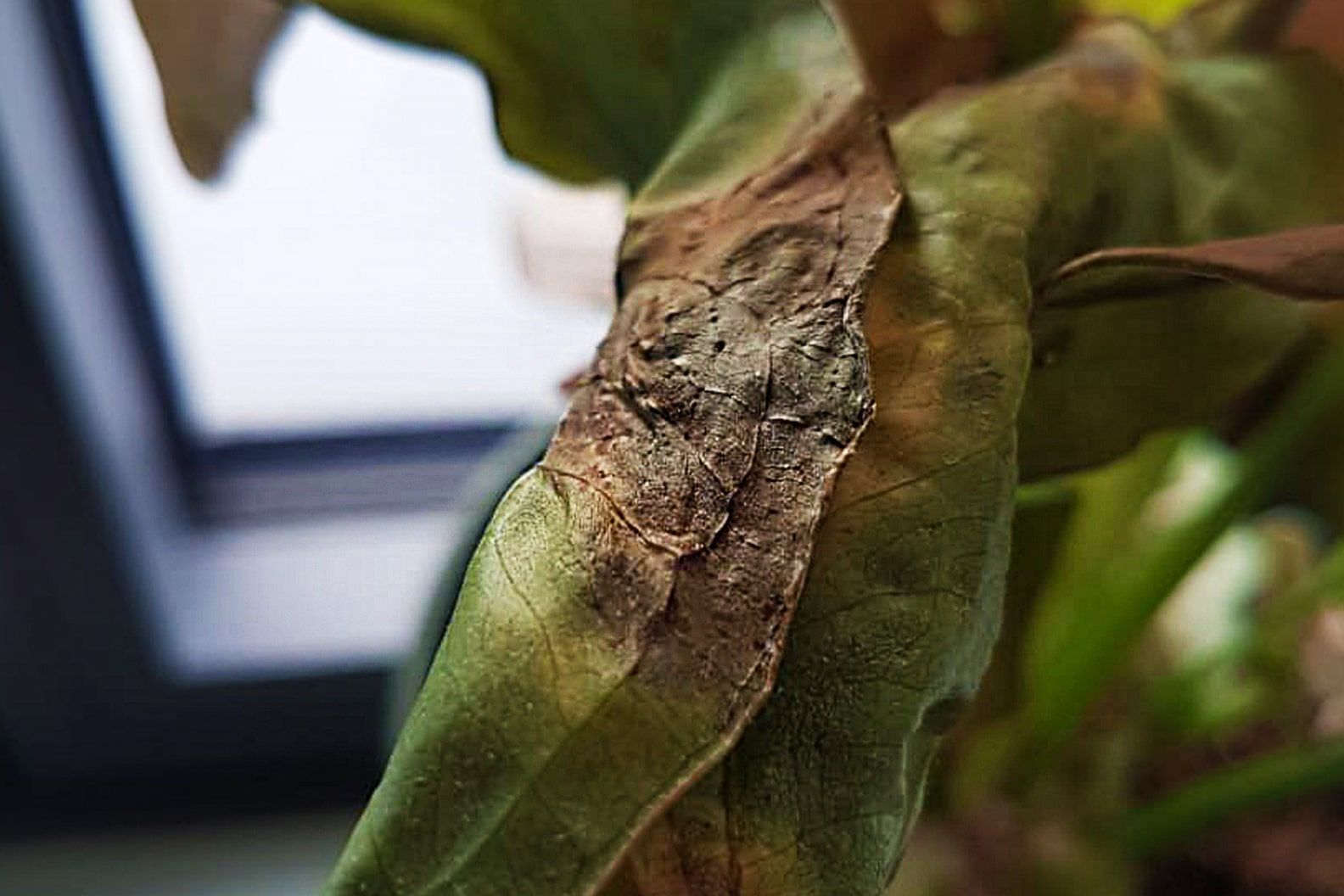
Wet brown spots
Leaf spots that are dark brown, slightly sunken and moist-looking may mean your plant has bacterial leaf spot. This isn’t good news, unfortunately.
Solution: First, isolate your plant so other plants don’t get infected. Cut off any leaves with spots on them and let your plant dry out. Only water it when the top two inches of soil feel dry, and don’t mist your plants until you’ve nipped that bacterial infection in the bud. These methods may beat a mild case, but in severe cases it may be best to dispose of the plant.
Growing brown or yellow spots
If you see brown or yellow spots that are sunken and growing in size over time, this could be something called anthracnose, a type of fungus. It’s not usually harmful, just unsightly.
Solution: Isolate your plant and cut off affected leaves. You’ll probably need to use a fungicide to eliminate the problem. Don’t mist your plants if you think they might have a fungal infection, misting will spread the fungal spores to other leaves and you might end up doing more harm than good.
Spots with a yellow halo
These spots are caused by a fungus, usually as a result of overwatering your plant.
Solution: You may be able to fix this by cutting off affected leaves and letting your plant’s soil dry out. In future, only water when the top two inches of soil feel dry. Again, don’t mist your plants for fear of spreading the fungal infection.
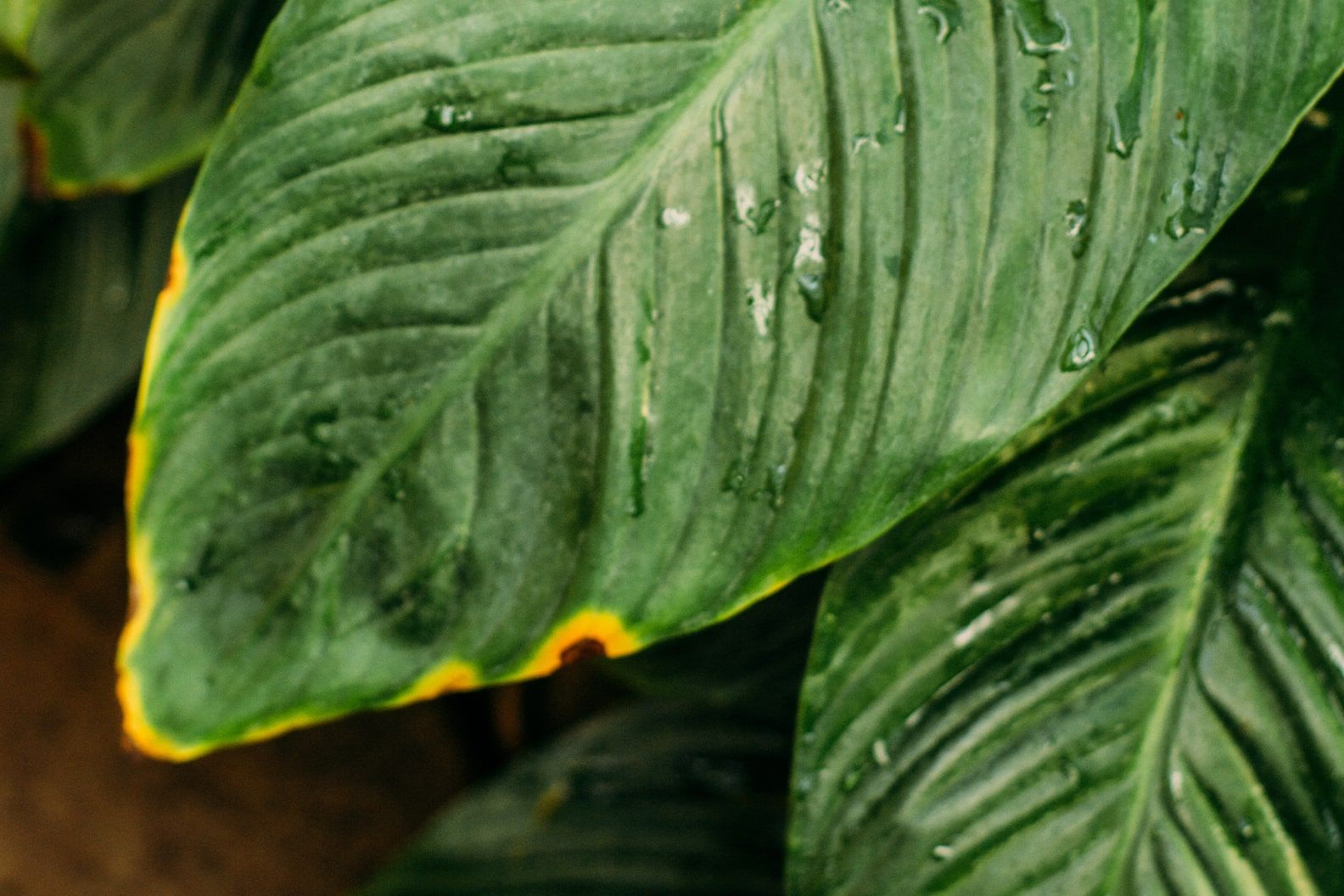
White or pale yellow spots
Very light coloured spots can be the result of cold. Either cold air temperatures or watering with very cold water.
Solution: Most plants like a steady, warm temperature. In winter, keep them away from draughty windows or really cold rooms. If watering with tap water, let it come up to room temperature before using.
Tiny brown spots
Very small brown speckles all over your leaves may be an indication of a pest infestation, most likely spider mites. If it’s spider mites you may also see fine webbing.
Solution: Check out our pest page to see how to get rid of pesky critters. Checking your plants for pests regularly can help prevent outbreaks becoming severe.
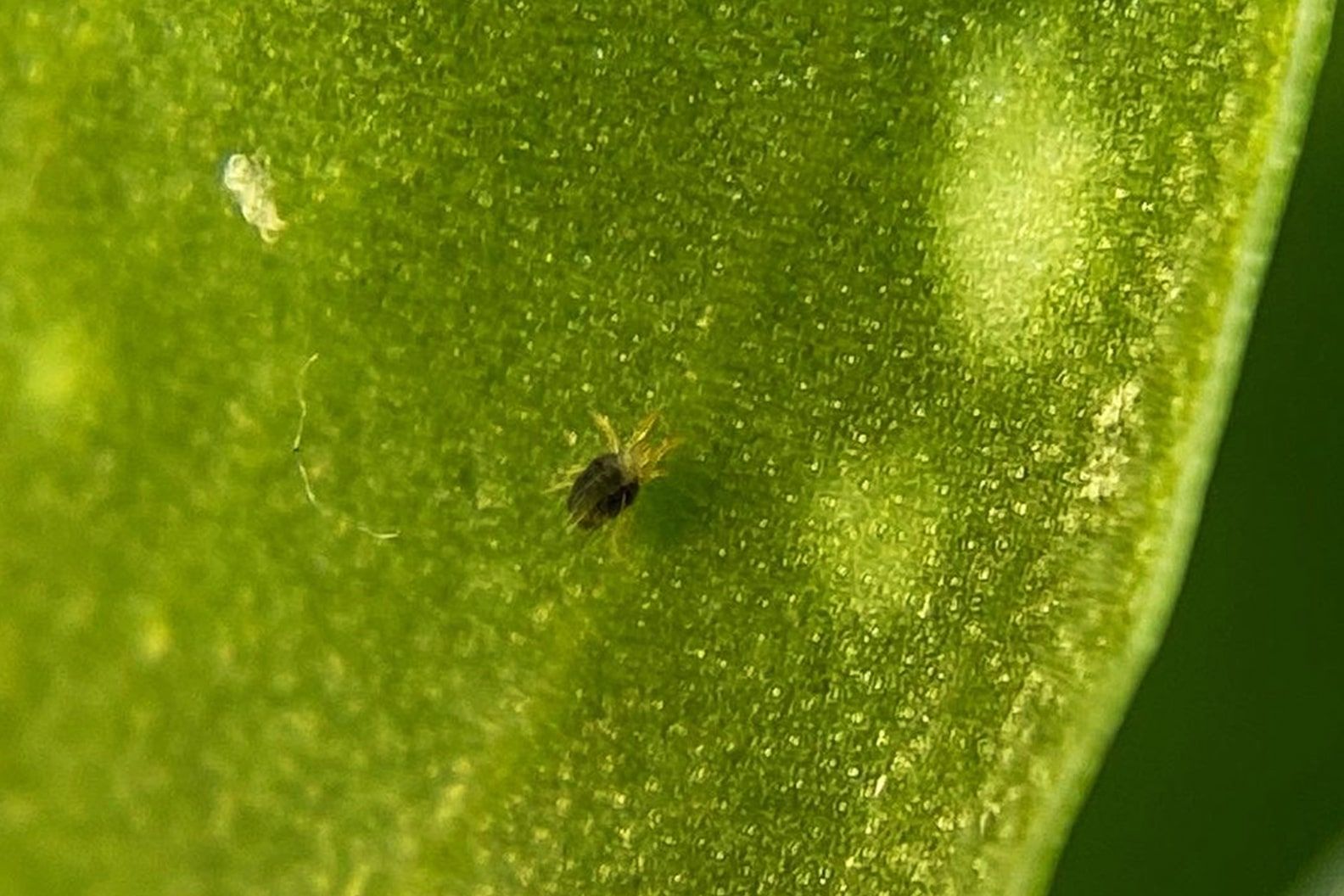
Never kill another plant
Plant tips. Special offers. No spam.
You might like
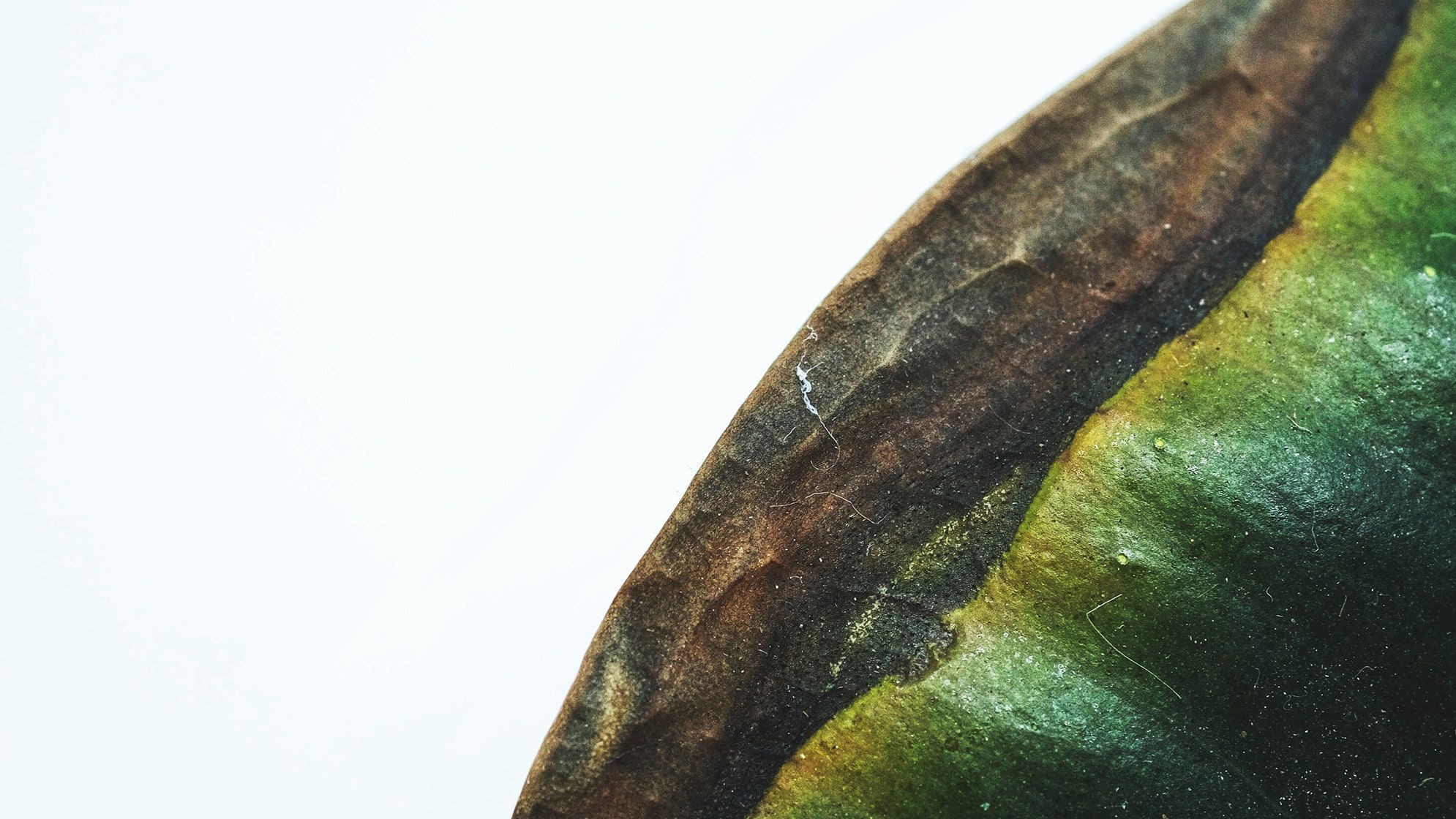
Why does my plant have brown leaves?
Don’t have a crisis over crispy edges
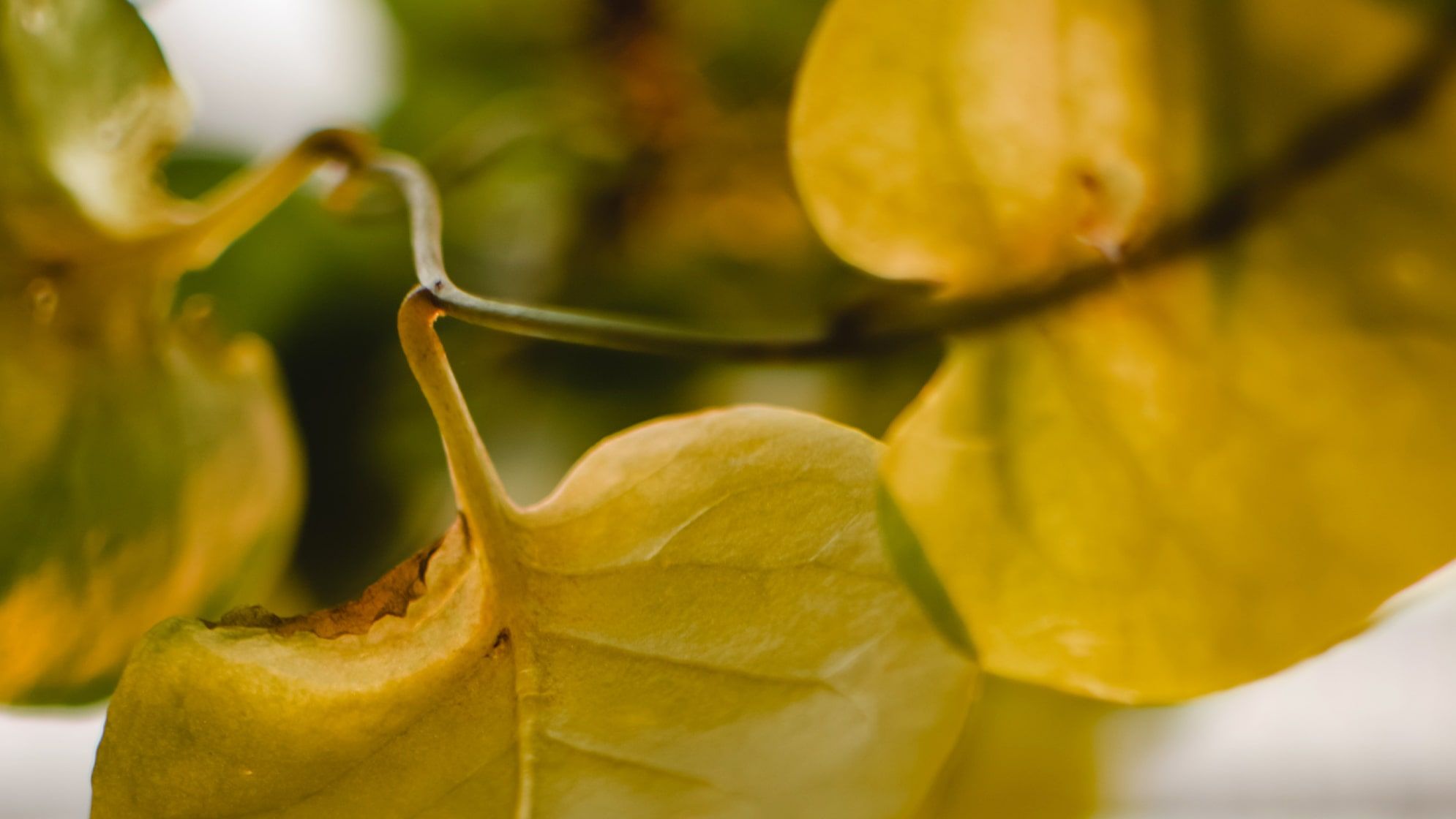
Why does my plant have yellow leaves?
How to spot them, fix them and stop them coming back
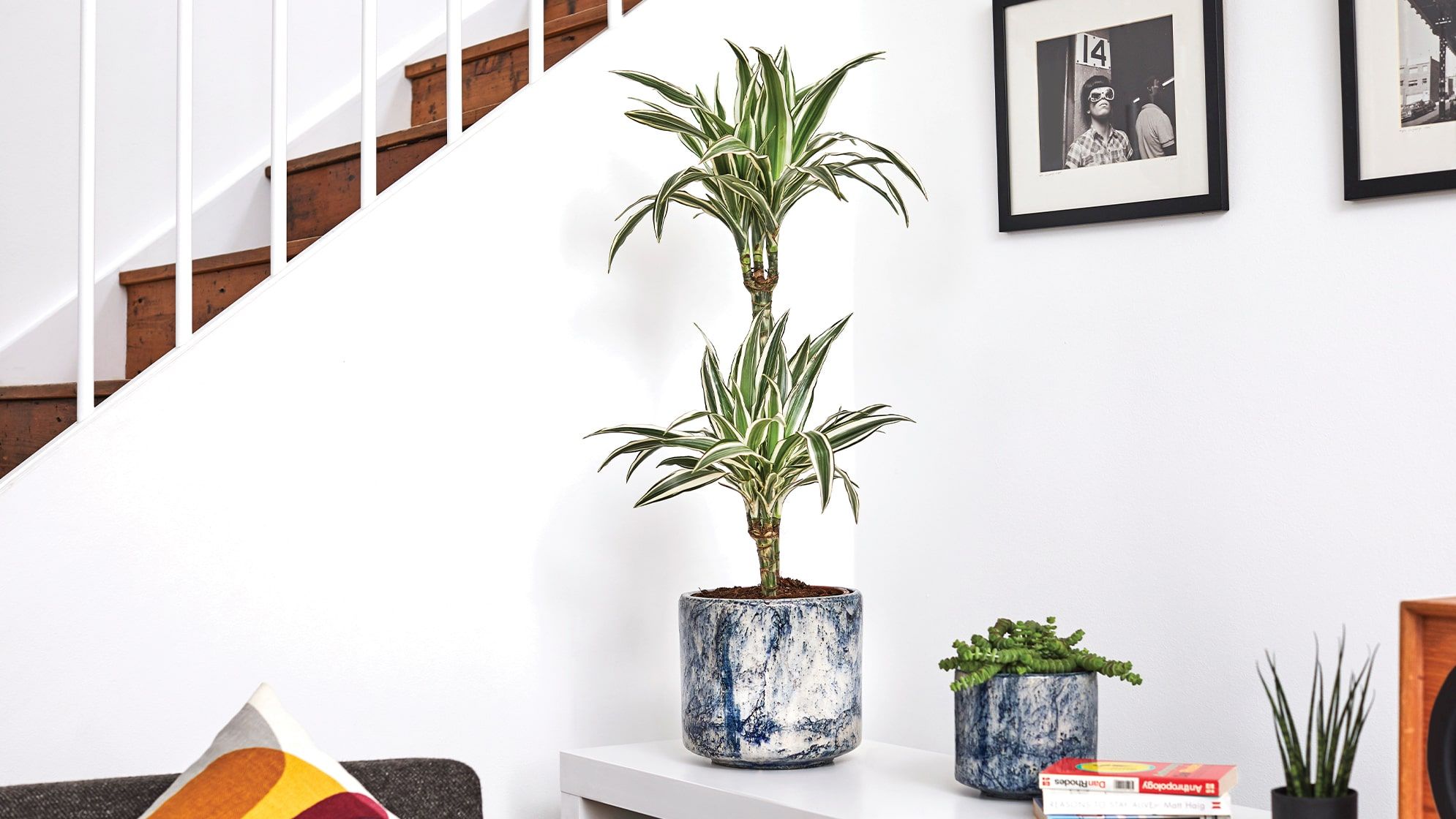
Big ideas for plants in small rooms
Because urban jungles come in all sizes
